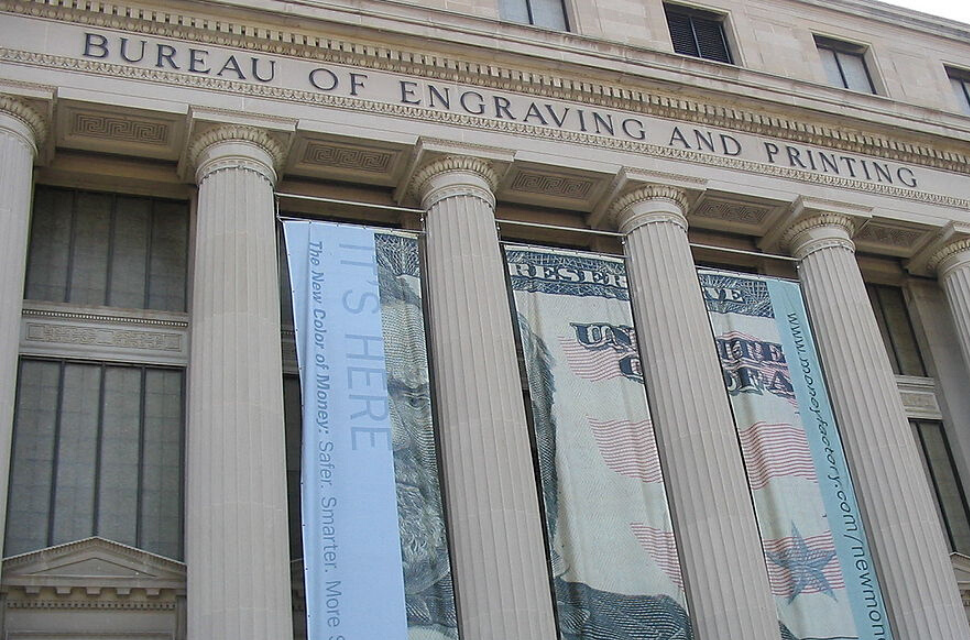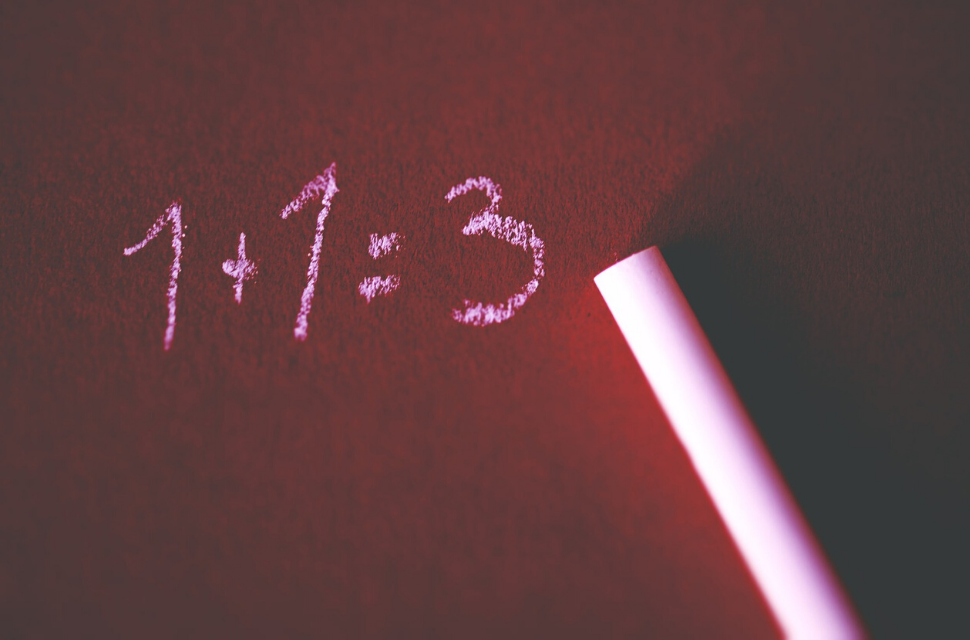
• Economic Crisis and RecoveryCrisis económica y recuperación

Ruchir Sharma had a New York Times column today telling readers that Germany will likely emerge from the pandemic as the world’s leading economic power. Part of his story is based on Germany’s robust pandemic stimulus package, which he puts at 47 percent of GDP. (This is somewhat misleading since it includes the nominal value of government loan guarantees, but it is robust stimulus by any measure.) Germany has also successfully used work-sharing and other mechanisms to minimize unemployment.
While these points are well-taken and areas where Germany provides an excellent model, Sharma’s main reason for predicting Germany’s ascendancy is its relatively low debt levels. It is difficult to see why debt levels should be a major impediment to the United States or China, or other countries that print their own currencies. The current interest rate on long-term government bonds in the United States is 0.6 percent, which is higher than the negative 0.5 percent rate on German bonds, but it is difficult to see how it would be a major impediment to future growth. When the United States had budget surpluses at the end of the 1990s, the rate on 10-year Treasury bonds was near 5.0 percent.
If we want to look at everyone’s debt basket case, Japan is currently paying 0.03 percent interest on its 10-year Treasury bonds. Again, this is higher than Germany’s rate, but the interest burden is hardly a major strain on Japan’s economy, even with its debt to GDP ratio of 250 percent.
Ruchir Sharma had a New York Times column today telling readers that Germany will likely emerge from the pandemic as the world’s leading economic power. Part of his story is based on Germany’s robust pandemic stimulus package, which he puts at 47 percent of GDP. (This is somewhat misleading since it includes the nominal value of government loan guarantees, but it is robust stimulus by any measure.) Germany has also successfully used work-sharing and other mechanisms to minimize unemployment.
While these points are well-taken and areas where Germany provides an excellent model, Sharma’s main reason for predicting Germany’s ascendancy is its relatively low debt levels. It is difficult to see why debt levels should be a major impediment to the United States or China, or other countries that print their own currencies. The current interest rate on long-term government bonds in the United States is 0.6 percent, which is higher than the negative 0.5 percent rate on German bonds, but it is difficult to see how it would be a major impediment to future growth. When the United States had budget surpluses at the end of the 1990s, the rate on 10-year Treasury bonds was near 5.0 percent.
If we want to look at everyone’s debt basket case, Japan is currently paying 0.03 percent interest on its 10-year Treasury bonds. Again, this is higher than Germany’s rate, but the interest burden is hardly a major strain on Japan’s economy, even with its debt to GDP ratio of 250 percent.
Read More Leer más Join the discussion Participa en la discusión
It’s so great that the Washington Post is able to find mind readers to write their articles. We got yet another example of this gift in an article that talked about Donald Trump’s demand that a payroll tax cut be included in the next pandemic relief package.
The piece told readers:
“….Trump is again demanding a payroll tax cut. He and some allies view the policy as an effective way to stimulate the economy and quickly give workers a boost [emphasis added].”
Most reporters would not know how Trump actually views the policy, they would just know what he says about the policy. For example, Trump may have focus group data showing that a payroll tax cut is politically popular, which would be a reason for him to support it, whether or not it is actually an effective way to boost the economy.
Thankfully the Post’s reporters are able to get behind what people do and say and tell us what they actually think.
It’s so great that the Washington Post is able to find mind readers to write their articles. We got yet another example of this gift in an article that talked about Donald Trump’s demand that a payroll tax cut be included in the next pandemic relief package.
The piece told readers:
“….Trump is again demanding a payroll tax cut. He and some allies view the policy as an effective way to stimulate the economy and quickly give workers a boost [emphasis added].”
Most reporters would not know how Trump actually views the policy, they would just know what he says about the policy. For example, Trump may have focus group data showing that a payroll tax cut is politically popular, which would be a reason for him to support it, whether or not it is actually an effective way to boost the economy.
Thankfully the Post’s reporters are able to get behind what people do and say and tell us what they actually think.
Read More Leer más Join the discussion Participa en la discusión
The New York Times had a piece reporting on the progress of Moderna’s coronavirus vaccine, based on a newly published article. After reporting on the relative success of the vaccine in a group of 45 healthy people, the NYT tells readers:
“Experts agree that more than one vaccine will be needed, because no single company could produce the billions of doses needed.”
This comment is more than a bit bizarre. There is no reason that a single vaccine could not be produced by many different companies. If Moderna, or any other company, has a patent monopoly, that could be an issue, but the government could force licensing of the vaccine. (Actually, since the government has picked up much, perhaps most, of the tab for this vaccine, it could just demand that the patent be placed in the public domain so that it can be produced as cheap generic by any drug company in the world.)
The piece is also somewhat bizarre in celebrating the success of this initial trial which it quotes someone on the development team as saying “it exceeds all expectations.” According to the piece, many of the 45 healthy people who were given the vaccine developed serious, but not life-threatening, side effects. With a vaccine, we are asking people to take it who quite likely will not be infected, and many of whom would not suffer serious consequences if they are infected.
If a substantial portion of healthy people have bad side effects, the impact on less healthy people could be more serious. It may be difficult to get people to take the vaccine if they would experience serious side effects. They may just opt to be careful to avoid contact with people who might be infected.
The New York Times had a piece reporting on the progress of Moderna’s coronavirus vaccine, based on a newly published article. After reporting on the relative success of the vaccine in a group of 45 healthy people, the NYT tells readers:
“Experts agree that more than one vaccine will be needed, because no single company could produce the billions of doses needed.”
This comment is more than a bit bizarre. There is no reason that a single vaccine could not be produced by many different companies. If Moderna, or any other company, has a patent monopoly, that could be an issue, but the government could force licensing of the vaccine. (Actually, since the government has picked up much, perhaps most, of the tab for this vaccine, it could just demand that the patent be placed in the public domain so that it can be produced as cheap generic by any drug company in the world.)
The piece is also somewhat bizarre in celebrating the success of this initial trial which it quotes someone on the development team as saying “it exceeds all expectations.” According to the piece, many of the 45 healthy people who were given the vaccine developed serious, but not life-threatening, side effects. With a vaccine, we are asking people to take it who quite likely will not be infected, and many of whom would not suffer serious consequences if they are infected.
If a substantial portion of healthy people have bad side effects, the impact on less healthy people could be more serious. It may be difficult to get people to take the vaccine if they would experience serious side effects. They may just opt to be careful to avoid contact with people who might be infected.
Read More Leer más Join the discussion Participa en la discusión
• Economic Crisis and RecoveryCrisis económica y recuperaciónInequalityLa DesigualdadIntellectual PropertyPropiedad Intelectual

Read More Leer más Join the discussion Participa en la discusión
• Economic Crisis and RecoveryCrisis económica y recuperaciónInequalityLa Desigualdad

It is standard for economic reporters to treat higher stock prices as good news. A rising stock market is often touted in the same way that job gains or GDP growth are touted, as evidence of a stronger economy.
This can be true. When the economy is growing at a healthy pace, the stock market is usually rising also. But the link is far more tenuous than is generally recognized. The market is in principle a measure of expected future profits. Policies that redistribute income from workers or taxpayers, such as anti-union laws or a corporate tax cut, would be expected to lead to a rising stock market, even if they did not spur economic growth.
But even beyond this direct redistributive issue, there is another sense in which a rising stock market can be bad for the 90 percent of the population that doesn’t own much stock (this includes 401(k)s). Higher stock prices encourage rich people to spend more money.
To see why this is an issue we need to pull out our MMT or Keynesian handbook. (MMT is essentially Keynes. That is not an insult; the term “modern monetary theory” is taken from the Keynes’ Treatise on Money.) To my view, the main takeaway from MMT is that the limit on the government’s ability to spend is inflation. This goes against the line pushed by the deficit hawks, that we have to worry about the government borrowing too much, because at some point lenders will be unwilling to lend us money.
As those of us who are not part of the deficit hawk cult point out, the government can print money if no one is willing to lend to it. Of course, in reality, investors have been very happy to lend the government money. The current interest rate on long-term government bonds is less than 0.7 percent. That compares to interest rates in the 4.0-5.0 percent range back when the government was running a budget surplus at the end of the 1990s.
But suppose this changed and investors suddenly soured on U.S. government debt? Well, the Fed could just buy the debt that investors wanted to dump. It would pay for it the old-fashioned way, by printing money.
This is certainly a logical possibility, after all the Fed can print as much money as it wants. (It’s actually all electronic transactions, with bank credits, but that is beside the point.) The real problem that we could run into is that printing money keeps interest rates lower than they otherwise would be. As a result, demand from public and private investment, housing, and other forms of consumption will be higher than in the case where the Fed is not buying bonds. In an economy that is operating near its capacity (definitely not the current economy), higher levels of demand can lead to inflation. If the Fed keeps printing large amounts of money, causing interest rates to stay low and demand to remain excessive, we could see spiraling inflation, or in an extreme case, hyperinflation.
In this story, the constraint on government spending is the risk of inflation, which in turn is the result of too much demand in the economy. This is the story of why we have taxes. If there is excessive demand and we don’t want to cut spending, then we can raise taxes to reduce consumption spending by the people we tax. The tax revenue is not needed to pay for the spending in the way that stores need sales to pay wages, the tax revenue is a way to reduce demand in the economy to provide the room needed for the government to spend.
With this story in mind, let’s get back to the stock market. Suppose the market rises by 10 percent, not because of expectations of greater future profits, but simply as a result of irrational exuberance. Investors are just excited about holding stock, as was the case in the 1990s stock bubble and may well be the case with certain stocks now.
If we round up somewhat, the current capitalization of the U.S. stock market is $40 trillion, which means that a 10 percent increase would imply an addition of $4 trillion. There is a well-known stock wealth effect on consumption, which is usually estimated as between 3-4 percent.[1] This means that if the value of households’ stock holdings rise by $100, they will increase their annual consumption spending by between $3-$4. If we apply this wealth effect calculation to the $4 trillion increase in market capitalization, it would imply an increase in annual consumption of between $120 billion and $160 billion, or 0.6 to 0.8 percent of GDP.
This increase in consumption generates more demand in the economy. It has roughly the same impact in employing labor and other resources as an increase in government spending of the same amount. This means that if the economy was more or less at its capacity, so that additional demand would lead to inflation, and the stock market jumped by 10 percent, we would suddenly be facing a problem with inflation.
In that case, in order to prevent inflation, the government would have to do something to reduce demand to offset the jump in consumption from stockholders.[2] This could mean that the Federal Reserve Board would raise interest rates to reduce investment spending, housing construction, and other consumption. Alternatively, the government could raise taxes to reduce consumption. However, going either route means that someone has to spend less because stockholders are spending more. In other words, higher stock prices mean that people who are not stockholders have to spend less money.
This conclusion is pretty much an inevitable implication of the wealth effect, regardless of whether or not someone accepts MMT or Keynesian economics. If stockholders are consuming more, then there is less for everyone else, at least when the economy is near full employment.
For this reason, most people have little cause to celebrate when stock prices rise. Not only do higher stock prices not benefit the typical worker, they can actually harm them by forcing government cutbacks or tax increases, or higher interest rates from the Fed. The stock market may be the home team for the people who own and run major news outlets, but not for most of the country. When the market goes up, most people should not be cheering.
[1] While people often talk about issuing stock as being a mechanism for financing investment, in reality it is rare for companies to finance investment by issuing shares. The one notable exception to this rule was in the 1990s stock bubble when many new companies found they could raise hundreds of millions or even billions by issuing shares, in some cases without even knowing how they could hope to make a profit from their business. More typically, companies issue shares to allow early investors to cash out their holdings.
[2] In reality, any increase in consumption takes time. Stockholders are not changing their consumption based on day to day movements in the stock market, rather this wealth effect on consumption would be phased in over 1 to 2 years.
It is standard for economic reporters to treat higher stock prices as good news. A rising stock market is often touted in the same way that job gains or GDP growth are touted, as evidence of a stronger economy.
This can be true. When the economy is growing at a healthy pace, the stock market is usually rising also. But the link is far more tenuous than is generally recognized. The market is in principle a measure of expected future profits. Policies that redistribute income from workers or taxpayers, such as anti-union laws or a corporate tax cut, would be expected to lead to a rising stock market, even if they did not spur economic growth.
But even beyond this direct redistributive issue, there is another sense in which a rising stock market can be bad for the 90 percent of the population that doesn’t own much stock (this includes 401(k)s). Higher stock prices encourage rich people to spend more money.
To see why this is an issue we need to pull out our MMT or Keynesian handbook. (MMT is essentially Keynes. That is not an insult; the term “modern monetary theory” is taken from the Keynes’ Treatise on Money.) To my view, the main takeaway from MMT is that the limit on the government’s ability to spend is inflation. This goes against the line pushed by the deficit hawks, that we have to worry about the government borrowing too much, because at some point lenders will be unwilling to lend us money.
As those of us who are not part of the deficit hawk cult point out, the government can print money if no one is willing to lend to it. Of course, in reality, investors have been very happy to lend the government money. The current interest rate on long-term government bonds is less than 0.7 percent. That compares to interest rates in the 4.0-5.0 percent range back when the government was running a budget surplus at the end of the 1990s.
But suppose this changed and investors suddenly soured on U.S. government debt? Well, the Fed could just buy the debt that investors wanted to dump. It would pay for it the old-fashioned way, by printing money.
This is certainly a logical possibility, after all the Fed can print as much money as it wants. (It’s actually all electronic transactions, with bank credits, but that is beside the point.) The real problem that we could run into is that printing money keeps interest rates lower than they otherwise would be. As a result, demand from public and private investment, housing, and other forms of consumption will be higher than in the case where the Fed is not buying bonds. In an economy that is operating near its capacity (definitely not the current economy), higher levels of demand can lead to inflation. If the Fed keeps printing large amounts of money, causing interest rates to stay low and demand to remain excessive, we could see spiraling inflation, or in an extreme case, hyperinflation.
In this story, the constraint on government spending is the risk of inflation, which in turn is the result of too much demand in the economy. This is the story of why we have taxes. If there is excessive demand and we don’t want to cut spending, then we can raise taxes to reduce consumption spending by the people we tax. The tax revenue is not needed to pay for the spending in the way that stores need sales to pay wages, the tax revenue is a way to reduce demand in the economy to provide the room needed for the government to spend.
With this story in mind, let’s get back to the stock market. Suppose the market rises by 10 percent, not because of expectations of greater future profits, but simply as a result of irrational exuberance. Investors are just excited about holding stock, as was the case in the 1990s stock bubble and may well be the case with certain stocks now.
If we round up somewhat, the current capitalization of the U.S. stock market is $40 trillion, which means that a 10 percent increase would imply an addition of $4 trillion. There is a well-known stock wealth effect on consumption, which is usually estimated as between 3-4 percent.[1] This means that if the value of households’ stock holdings rise by $100, they will increase their annual consumption spending by between $3-$4. If we apply this wealth effect calculation to the $4 trillion increase in market capitalization, it would imply an increase in annual consumption of between $120 billion and $160 billion, or 0.6 to 0.8 percent of GDP.
This increase in consumption generates more demand in the economy. It has roughly the same impact in employing labor and other resources as an increase in government spending of the same amount. This means that if the economy was more or less at its capacity, so that additional demand would lead to inflation, and the stock market jumped by 10 percent, we would suddenly be facing a problem with inflation.
In that case, in order to prevent inflation, the government would have to do something to reduce demand to offset the jump in consumption from stockholders.[2] This could mean that the Federal Reserve Board would raise interest rates to reduce investment spending, housing construction, and other consumption. Alternatively, the government could raise taxes to reduce consumption. However, going either route means that someone has to spend less because stockholders are spending more. In other words, higher stock prices mean that people who are not stockholders have to spend less money.
This conclusion is pretty much an inevitable implication of the wealth effect, regardless of whether or not someone accepts MMT or Keynesian economics. If stockholders are consuming more, then there is less for everyone else, at least when the economy is near full employment.
For this reason, most people have little cause to celebrate when stock prices rise. Not only do higher stock prices not benefit the typical worker, they can actually harm them by forcing government cutbacks or tax increases, or higher interest rates from the Fed. The stock market may be the home team for the people who own and run major news outlets, but not for most of the country. When the market goes up, most people should not be cheering.
[1] While people often talk about issuing stock as being a mechanism for financing investment, in reality it is rare for companies to finance investment by issuing shares. The one notable exception to this rule was in the 1990s stock bubble when many new companies found they could raise hundreds of millions or even billions by issuing shares, in some cases without even knowing how they could hope to make a profit from their business. More typically, companies issue shares to allow early investors to cash out their holdings.
[2] In reality, any increase in consumption takes time. Stockholders are not changing their consumption based on day to day movements in the stock market, rather this wealth effect on consumption would be phased in over 1 to 2 years.
Read More Leer más Join the discussion Participa en la discusión
• Economic Crisis and RecoveryCrisis económica y recuperaciónGlobalization and TradeGlobalización y comercio

Ross Douthat has good news for folks who don’t like China. His NYT column yesterday told us that China’s economy will run out of steam in a decade and that the U.S. will again be able to reclaim world leadership after 2030. The problem is that the piece presents nothing to support this claim.
After telling readers that China is passing the U.S. for world leadership due to the inept presidency of Donald Trump, Douthat gets to the meat of his piece:
“It’s possible that we’re nearing a peak of U.S.-China tension not because China is poised to permanently overtake the United States as a global power, but because China itself is peaking — with a slowing growth rate that may leave it short of the prosperity achieved by its Pacific neighbors, a swiftly aging population, and a combination of self-limiting soft power and maxed-out hard power that’s likely to diminish, relative to the U.S. and India and others, in the 2040s and beyond.
“Instead of a Chinese Century, in other words, the coronavirus might be ushering in a Chinese Decade, in which Xi Jinping’s government behaves with maximal aggression because it sees an opportunity that won’t come again.”
The problem is that the cited piece for “China’s slowing growth rate” still has China growing close to 4.0 percent annually. That is almost 2.0 percentage points faster than the 2.1 percent growth rate projected for the U.S. in the last five years of the decade.
Furthermore, the U.S. economy is starting from a much lower base. In 2019 China’s economy was already more than 25 percent larger than the U.S. economy, while the U.S. economy is projected to shrink by 5.5 percent this year, China’s is expected to grow by 1.8 percent. It is hard to see how an economy that is starting from a lower level and growing at a slower pace, will pass a larger economy that is growing more rapidly. I guess it takes an NYT columnist to figure that one out.
One final point, there seems to be an obsession in the media with China’s lower birth rate and likely declining population. While the idea that this is a big problem for China is repeated endlessly, it really lead to the obvious question, why?
So the country will have fewer people. This will likely mean fewer people working in very low productivity jobs in agriculture and the service sector. And why exactly would this be a problem for China?
Ross Douthat has good news for folks who don’t like China. His NYT column yesterday told us that China’s economy will run out of steam in a decade and that the U.S. will again be able to reclaim world leadership after 2030. The problem is that the piece presents nothing to support this claim.
After telling readers that China is passing the U.S. for world leadership due to the inept presidency of Donald Trump, Douthat gets to the meat of his piece:
“It’s possible that we’re nearing a peak of U.S.-China tension not because China is poised to permanently overtake the United States as a global power, but because China itself is peaking — with a slowing growth rate that may leave it short of the prosperity achieved by its Pacific neighbors, a swiftly aging population, and a combination of self-limiting soft power and maxed-out hard power that’s likely to diminish, relative to the U.S. and India and others, in the 2040s and beyond.
“Instead of a Chinese Century, in other words, the coronavirus might be ushering in a Chinese Decade, in which Xi Jinping’s government behaves with maximal aggression because it sees an opportunity that won’t come again.”
The problem is that the cited piece for “China’s slowing growth rate” still has China growing close to 4.0 percent annually. That is almost 2.0 percentage points faster than the 2.1 percent growth rate projected for the U.S. in the last five years of the decade.
Furthermore, the U.S. economy is starting from a much lower base. In 2019 China’s economy was already more than 25 percent larger than the U.S. economy, while the U.S. economy is projected to shrink by 5.5 percent this year, China’s is expected to grow by 1.8 percent. It is hard to see how an economy that is starting from a lower level and growing at a slower pace, will pass a larger economy that is growing more rapidly. I guess it takes an NYT columnist to figure that one out.
One final point, there seems to be an obsession in the media with China’s lower birth rate and likely declining population. While the idea that this is a big problem for China is repeated endlessly, it really lead to the obvious question, why?
So the country will have fewer people. This will likely mean fewer people working in very low productivity jobs in agriculture and the service sector. And why exactly would this be a problem for China?
Read More Leer más Join the discussion Participa en la discusión
It really gets annoying how all discussions of inequality in the media take the White Savior route, where we need the government to act to reduce inequality created by the natural workings of the market. David Leonhardt gave us another dose of this one today when he speculated about the state of the post-pandemic world.
While much of his speculation is interesting, he hypothesizes that we will see greater corporate consolidation in the post-pandemic world. He then says that this can lead to greater inequality, however, he holds out the hope that under a Biden administration, the government might take action to counter this trend.
First, it is important to note that increased corporate profits have been a relatively small factor in the rise of inequality over the last four decades. The vast majority of the upward redistribution was within the wage structure, with CEOs, Wall Street traders, doctors, and other highly paid professionals gaining at the expense of ordinary workers. Only about 10 percent of the gap between productivity and wage growth could be attributed to the shift to profits. Furthermore, the labor share had been rising in the tight labor market of the last few years, so this shift could well have been reversed completely if the pandemic had not hit.
This point is important not only because Leonhardt’s concerns about the impact of concentration on inequality may be misplaced, but because he ignores the real sources of inequality. In particular, government-granted patent and copyright monopolies have been a huge factor in the rise of inequality over the last four decades. Reducing their impact on the upward redistribution of income requires less government action, not more.
This point should be especially obvious to people paying attention to efforts to develop a vaccine to protect against the coronavirus. The government is paying companies billions of dollars to research and test a vaccine. Incredibly, it is also giving these companies patent monopolies, which will then let them charge whatever they want for a successful vaccine.
These monopolies are likely to be worth tens or even hundreds of billions of dollars to their holders. If the government instead went the route where it said that if it paid for the research, then it would be fully open and all vaccines developed can then be sold as cheap generics, it would both save the public an enormous sum in paying for the vaccine and mean that the shareholders and top researchers at these drug companies would not get so rich.
This issue of course comes up more generally. We will spend more than $500 billion this year on prescription drugs that would cost us less than $100 billion in a free market. The gap of $400 billion is roughly 20 percent of all before-tax corporate profits. There are similar stories in medical equipment, computer software, and many other major sectors of the economy.
If the government had alternative mechanisms to finance research and development it would redistribute less income upward, which would mean that we would have less inequality. The government also promotes inequality through its regulation of the financial sector, rules of corporate governance, and protection for highly paid professionals. (It’s all in Rigged [it’s free].)
Anyhow, it is apparently satisfying for policy types to say that we need good government to address the inequality that the bad market is giving to us, but this view has little to do with reality. First and foremost we need the government to stop structuring the market in ways that give us ever more inequality.
It really gets annoying how all discussions of inequality in the media take the White Savior route, where we need the government to act to reduce inequality created by the natural workings of the market. David Leonhardt gave us another dose of this one today when he speculated about the state of the post-pandemic world.
While much of his speculation is interesting, he hypothesizes that we will see greater corporate consolidation in the post-pandemic world. He then says that this can lead to greater inequality, however, he holds out the hope that under a Biden administration, the government might take action to counter this trend.
First, it is important to note that increased corporate profits have been a relatively small factor in the rise of inequality over the last four decades. The vast majority of the upward redistribution was within the wage structure, with CEOs, Wall Street traders, doctors, and other highly paid professionals gaining at the expense of ordinary workers. Only about 10 percent of the gap between productivity and wage growth could be attributed to the shift to profits. Furthermore, the labor share had been rising in the tight labor market of the last few years, so this shift could well have been reversed completely if the pandemic had not hit.
This point is important not only because Leonhardt’s concerns about the impact of concentration on inequality may be misplaced, but because he ignores the real sources of inequality. In particular, government-granted patent and copyright monopolies have been a huge factor in the rise of inequality over the last four decades. Reducing their impact on the upward redistribution of income requires less government action, not more.
This point should be especially obvious to people paying attention to efforts to develop a vaccine to protect against the coronavirus. The government is paying companies billions of dollars to research and test a vaccine. Incredibly, it is also giving these companies patent monopolies, which will then let them charge whatever they want for a successful vaccine.
These monopolies are likely to be worth tens or even hundreds of billions of dollars to their holders. If the government instead went the route where it said that if it paid for the research, then it would be fully open and all vaccines developed can then be sold as cheap generics, it would both save the public an enormous sum in paying for the vaccine and mean that the shareholders and top researchers at these drug companies would not get so rich.
This issue of course comes up more generally. We will spend more than $500 billion this year on prescription drugs that would cost us less than $100 billion in a free market. The gap of $400 billion is roughly 20 percent of all before-tax corporate profits. There are similar stories in medical equipment, computer software, and many other major sectors of the economy.
If the government had alternative mechanisms to finance research and development it would redistribute less income upward, which would mean that we would have less inequality. The government also promotes inequality through its regulation of the financial sector, rules of corporate governance, and protection for highly paid professionals. (It’s all in Rigged [it’s free].)
Anyhow, it is apparently satisfying for policy types to say that we need good government to address the inequality that the bad market is giving to us, but this view has little to do with reality. First and foremost we need the government to stop structuring the market in ways that give us ever more inequality.
Read More Leer más Join the discussion Participa en la discusión
• InequalityLa DesigualdadIntellectual PropertyPropiedad Intelectual

Read More Leer más Join the discussion Participa en la discusión
• COVID-19CoronavirusEconomic Crisis and RecoveryCrisis económica y recuperaciónInequalityLa DesigualdadIntellectual PropertyPropiedad Intelectual

Read More Leer más Join the discussion Participa en la discusión
• COVID-19CoronavirusEconomic Crisis and RecoveryCrisis económica y recuperaciónGlobalization and TradeGlobalización y comercio

Read More Leer más Join the discussion Participa en la discusión
